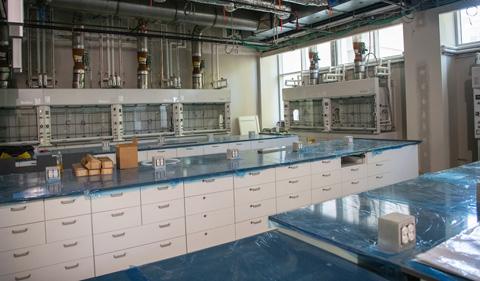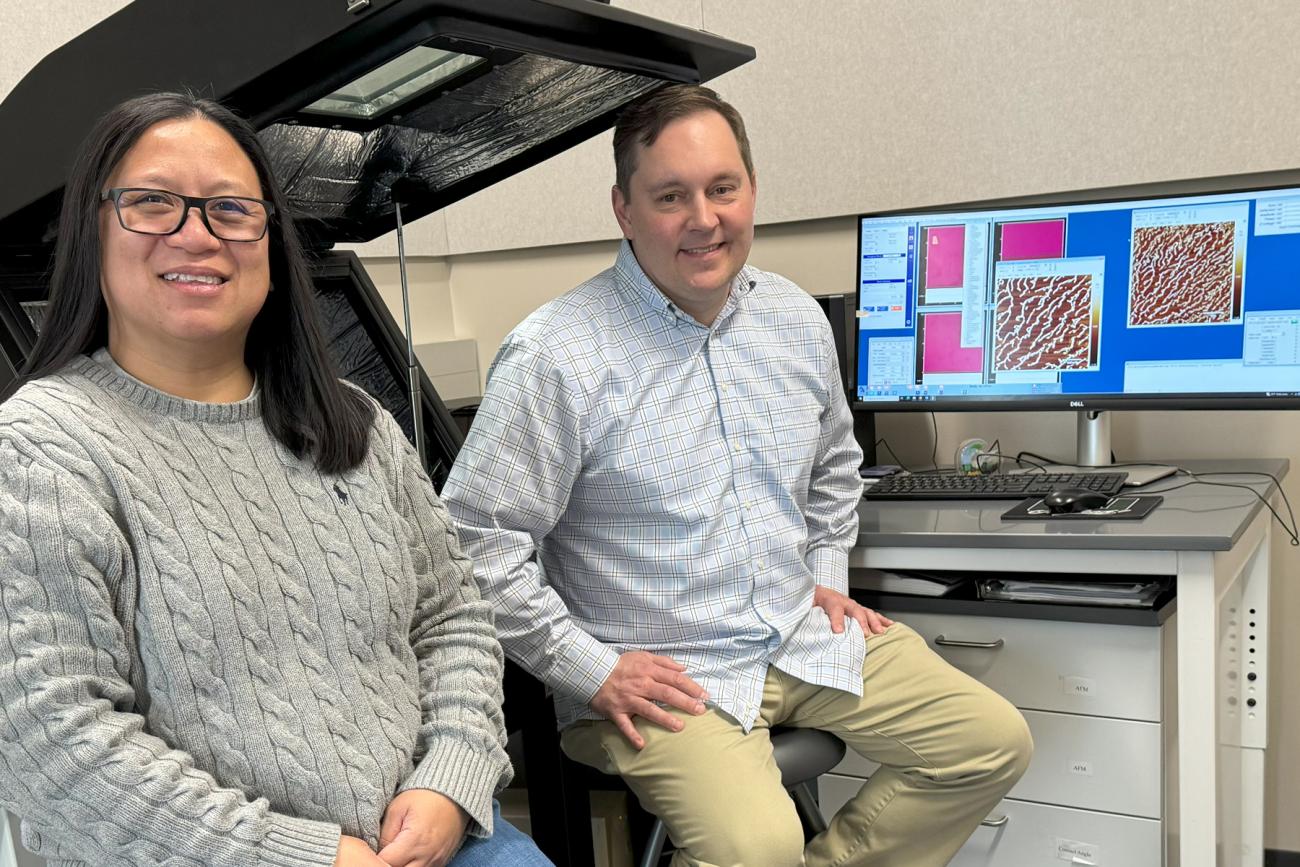
Chemistry & Biochemistry students explore yesterday, today and tomorrow, searching for solutions to today's problems and imagining what they can build in a future of nano-devices and smart supramolecular architectures. They even probe the mysteries nature embedded long ago in cell walls and RNA.
With a Chemistry Degree...
-
Conduct research on ultraviolet exposure and basal cell skin cancerStudents in Dr. Shiyong Wu's lab traveled to the American Society for Photobiology meeting to showcase their NIH-funded research that they are doing on ultraviolet exposure and basal cell skin cancer.
-
Demonstrate atomic-level control of rare earth moleculesFor the first time, scientists formed a charged rare earth molecule on a metal surface and rotated it — both clockwise and counterclockwise without affecting its charge — using scanning tunneling microscopy.
-
Uncover a new class of medicinal compounds that target RNAA team of students in Jennifer Hines' lab recently uncovered a new class of compounds that can target RNA and disrupt its function, a discovery that could be used in the development of RNA-targeted medicines.
What Happens When Einstein's Drunken Sailors Get Together?
In a new discovery about the rate of adsorption, the Chen group goes beyond Albert Einstein's 1905 drunken sailor random walk model of single molecule diffusion.

When graduate students Srijana Pandey and Dinesh Gautam put Dr. Jixin Chen's theoretical model to the test, they found that as the drunken sailors (YOYO-1 molecules) bump into each other in the same room, the closer they are the faster they will bump.
"Thus the rate of binding is not linearly proportional to the concentration of the molecules but rather follows a surprising fraction reaction order. This theory is disruptive and requires careful experimental investigations," Chen says.
Read more about their work Measuring the Adsorption Cross Section of YOYO-1 to Immobilized DNA Molecules in The Journal of Physical Chemistry B.

Apply Now For Graduate Studies
Make innovative discoveries to meet society’s needs in diverse sectors including health, energy, and sustainability. Our graduate program develops 21st century leaders in the molecular sciences.

Research Areas
Faculty research spans the full breadth of the molecular sciences with many interdisciplinary connections to forensics, materials science, medicine and biotechnology.

Outreach and Public Engagement
The Chemistry & Biochemistry Department is committed to engagement with the local community as well as the scholarly community.

Giving Opportunities
Gifts by alumni and friends help support faculty and students in the Chemistry & Biochemistry Department.




